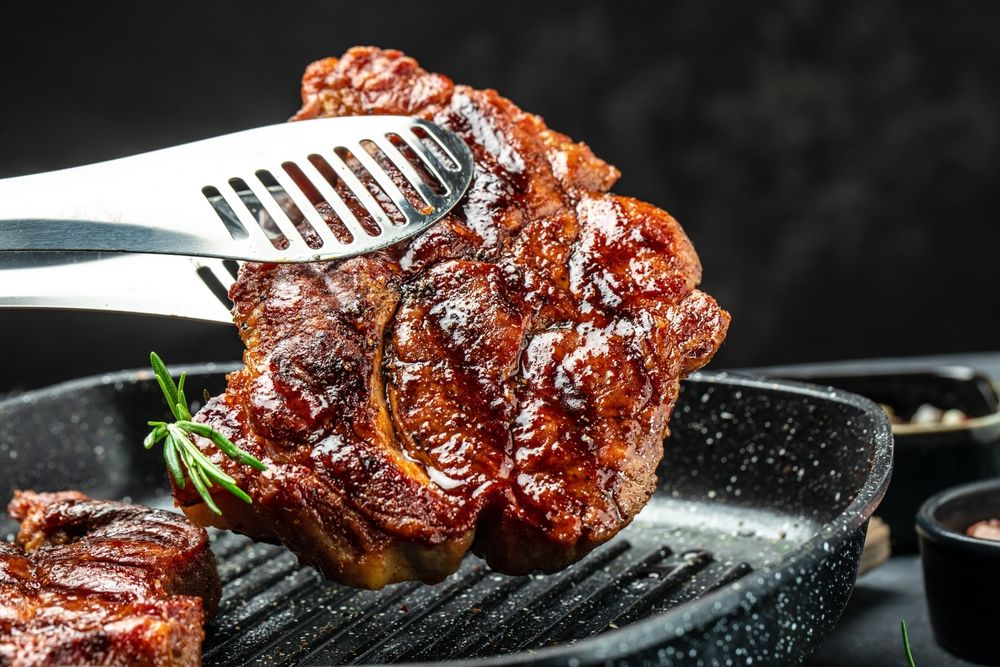Grilling isn’t just for the backyard anymore. With the right grill pan, you can bring that same char-grilled flavor and texture into your kitchen — no open flame or bulky equipment required. Whether you’re searing steaks, grilling vegetables, or making panini-style sandwiches, a quality grill pan gives you the distinct grill marks and caramelized flavor you’d get from an outdoor grill.
But not all grill pans are made the same. From material to shape, ridges to handles, each feature affects performance, cleaning, and cooking results. This guide breaks down everything you need to know to choose the best grill pan for your indoor cooking needs.
1. Understand the Purpose of a Grill Pan
A grill pan mimics the high-heat searing of a traditional grill while staying compatible with stovetops. The raised ridges allow fat to drip off, producing that signature char and grilled texture.
Why Use a Grill Pan Indoors?
-
Adds grill marks and smoky flavor without outdoor equipment.
-
Great for apartments or small homes where outdoor grilling isn’t allowed.
-
Allows year-round grilling, regardless of weather.
-
Useful for lean cooking — excess fat drips away.
It’s a practical and versatile tool for any home cook who wants to replicate grilled dishes indoors.
2. Choose the Right Material
The material of your grill pan plays a key role in heat retention, durability, and ease of cleaning.
Common Grill Pan Materials:
Cast Iron
-
Excellent heat retention and high searing capability.
-
Creates pronounced grill marks and crusts.
-
Can be seasoned or enameled.
-
Heavy and requires special care (hand-washing, drying).
Enameled Cast Iron
-
Same heat benefits without the need for seasoning.
-
Easier to clean, with non-reactive surfaces.
-
More expensive and still relatively heavy.
Hard-Anodized Aluminum
-
Lightweight and heats quickly.
-
Often features nonstick coatings.
-
Less durable than cast iron but easier to handle and clean.
Stainless Steel
-
Sleek, non-reactive, and dishwasher-safe.
-
Doesn’t retain heat as well as cast iron.
-
Ideal for moderate grilling and quick cleanup.
Choose cast iron if you want top performance and authentic grill flavor. For convenience and lighter handling, nonstick aluminum may suit you better.
3. Select the Ideal Shape and Size
Grill pans come in various shapes and sizes. The best option depends on what you’re cooking and how much space you have.
Common Shapes:
-
Square: Most popular; fits well on stovetops and offers more surface area.
-
Round: Better for smaller meals or side dishes; may work better on gas burners.
-
Rectangular (Double burner): Ideal for large families or batch cooking.
Size Considerations:
-
10-12 inches is the standard for most households.
-
Larger pans may require two burners to heat evenly.
-
Ensure your pan fits comfortably on your stovetop without crowding other burners.
A square, 10- or 11-inch cast iron grill pan is a solid all-around choice for most indoor grilling tasks.
4. Consider the Depth and Height of the Ridges
The ridges on a grill pan are what create those iconic sear marks — and they also affect how the food cooks and how much fat is drained away.
Deeper Ridges:
-
Produce more defined grill marks.
-
Better for draining grease and fat.
-
Help vegetables and meats “sit above” the liquid.
Shallower Ridges:
-
Easier to clean.
-
Less effective at mimicking traditional grilling.
Aim for deeper ridges if you’re cooking steaks, burgers, or other meats that benefit from a charred exterior and low-fat cooking.
5. Look for a Pour Spout or Drip Channel
Some grill pans feature pour spouts or channels on the sides to help drain excess fat and juices during or after cooking.
Why It Matters:
-
Prevents your food from becoming soggy.
-
Makes draining grease safer and cleaner.
-
Useful for collecting drippings if you plan to make a pan sauce.
If you plan to cook a lot of meats or oily foods, this feature can improve both the results and ease of cleaning.
6. Assess Handle Design and Heat Resistance
The handle of your grill pan affects how comfortable and safe it is to use — especially at high temperatures.
What to Look For:
-
Long, ergonomic handles for better leverage.
-
Helper handles on the opposite side to assist with heavy lifting.
-
Oven-safe construction if you plan to finish dishes under the broiler.
Cast iron pans often have short metal handles that get very hot — always use oven mitts. Silicone-wrapped or removable handles add comfort and safety but may reduce oven compatibility.
7. Consider Compatibility With Your Cooktop
Not every grill pan works well on every stove. Be sure to check compatibility if you have induction or ceramic cooktops.
Stovetop Compatibility:
-
Cast iron and stainless steel work on all types, including induction.
-
Aluminum typically needs a bonded base for induction.
-
Glass-top stoves may not support heavy cast iron — look for flat, smooth-bottomed designs.
If you have an induction stove, ensure your grill pan is magnetic (test with a fridge magnet) or labeled as “induction-compatible.”
8. Ease of Cleaning and Maintenance
Cleaning a grill pan isn’t always as simple as wiping down a nonstick skillet — especially with deep ridges and sticky sauces involved.
Cleaning Tips:
-
Choose dishwasher-safe models if you want low maintenance.
-
For cast iron, avoid soap and use a stiff brush or kosher salt scrub.
-
Look for nonstick coatings if easy cleanup is a priority.
A pan with a detachable or removable handle may also be easier to clean and store.
9. Think About Extra Features
Some grill pans come with bonus features that make cooking more convenient or effective.
Optional Add-ons:
-
Press or weight: Helps press meats or sandwiches evenly and adds authentic grill marks.
-
Lids: Trap steam and heat for faster, more even cooking.
-
Removable ridges or inserts: Easier to clean or switch styles.
These are helpful extras, especially if you cook a wide variety of grilled dishes or want more control over texture and doneness.
10. Budget and Value
Grill pans vary widely in price based on material, brand, and added features. Choose the best value for your budget based on how often you plan to use it.
General Price Ranges:
-
$20–$40: Basic aluminum or nonstick pans, good for casual use.
-
$40–$80: Mid-range cast iron or stainless steel, ideal for frequent cooking.
-
$80–$150+: Premium cast iron or enameled pans from top brands like Le Creuset or Staub.
Spending a bit more on a durable, high-performance pan can pay off if you use it regularly.



